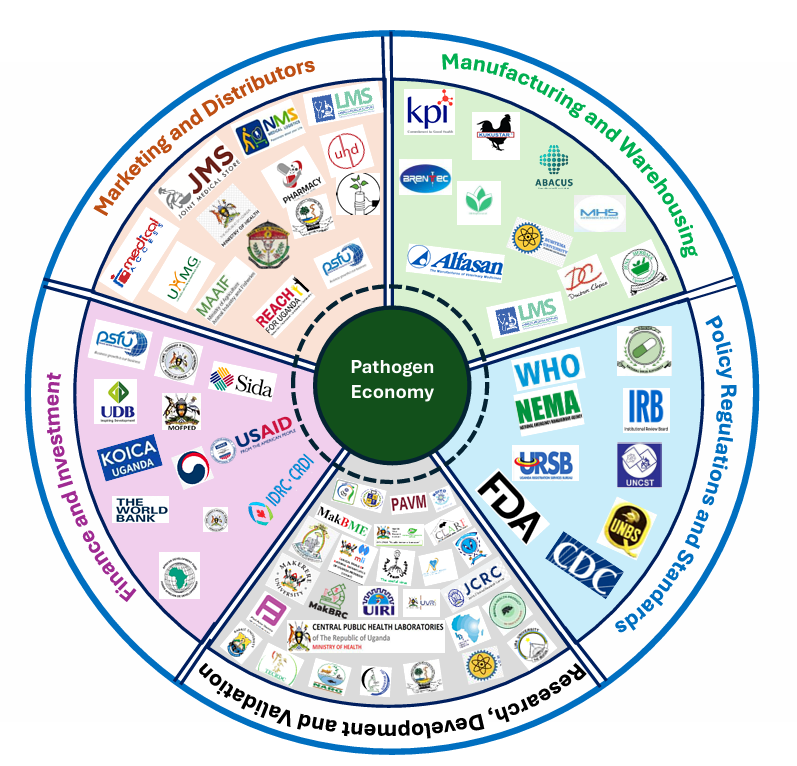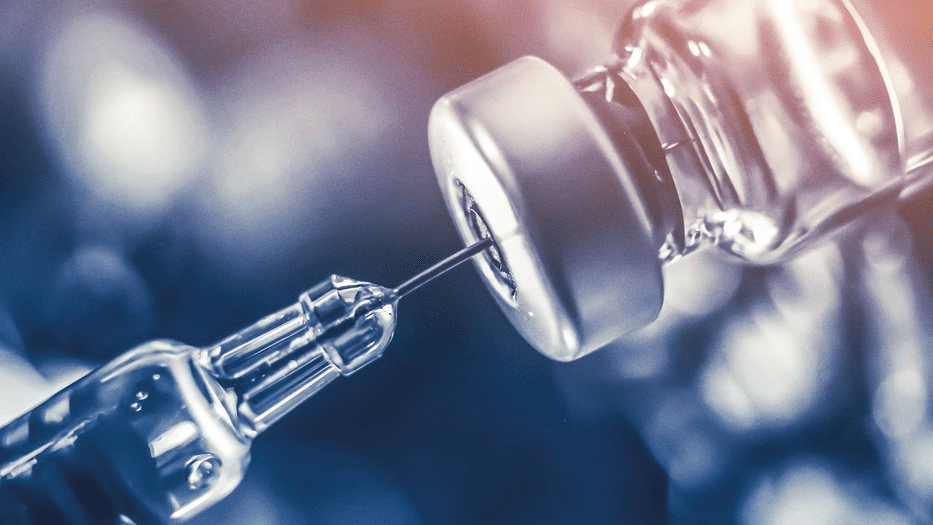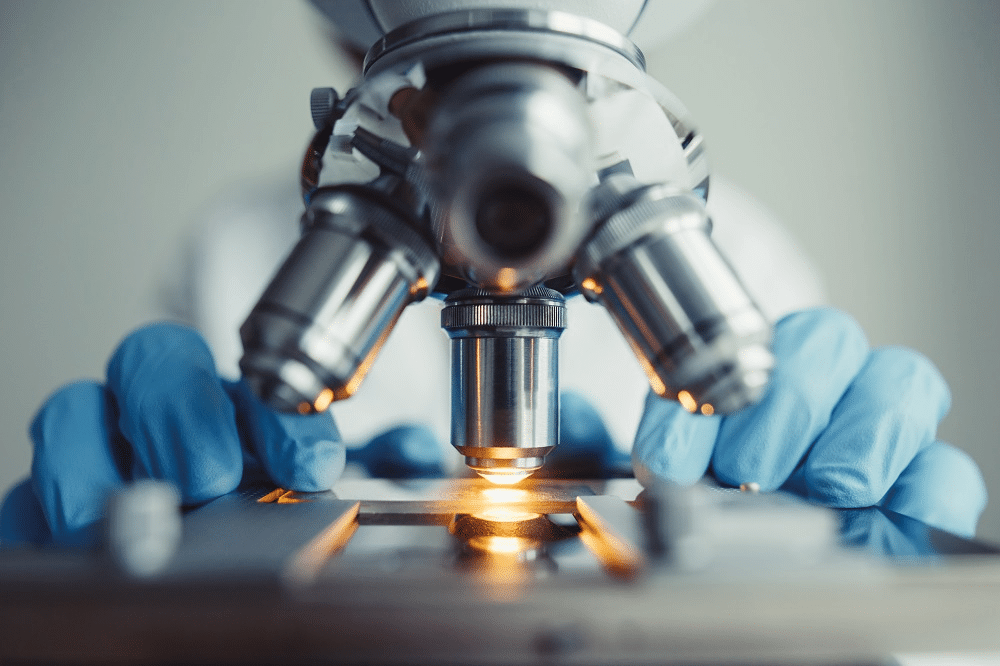Leveraging pathogens
to drive the Uganda
biotechnology industry
What is Pathogen Economy?
This refers to the making, selling, and use of goods and services related to the
prevention, control, and treatment of damage due to pathogens.

Vision
A leading economy driven by industrialization through locally developed response tools to health threats.
Mandate
Research, Development, technology transfer and commercialization of
innovations targeting pathogen control and management such as vaccines, diagnostics, therapeutics, inputs, supplies and related technologies for plant, animal, and human health threats.
Ecosystem - wheel of bureau
Under the coordination of the STI Secretariat, Pathogen Economy Ecosystem has been organized Consortium that currently comprises over 100 entities across, vaccines, therapeutics, diagnostics, medical consumables equipment and emerging technologies value chains.

Pathogen Economy Priority Value Chains
The Pathogen Economy currently has five key priority value chains to achieve a developed pathogen economy ecosystem contributing 48.3 billion USD to Uganda’s GDP by 2040.
VACCINES


The vaccine value chain focuses on developing animal and plant vaccines for disease management. This encompasses the journey of vaccines, from ideation to commercialization.
THERAPEUTICS


DIAGNOSTICS


The diagnostic value chain focuses on developing, validating, and optimizing innovative diagnostic tools and technologies to enhance disease detection, monitoring, and management for plants, animals, and Humans.
MEDICAL CONSUMABLES


The biomedical consumables value chain encompasses the entire process of developing, producing, and delivering essential laboratory and clinical consumables that support healthcare, diagnostics, research, and outbreak response
MEDICAL EQUIPMENT


This encompasses the journey of medical devices from idea to
commercialization of, involving stages such as idea generation, research and development,
regulatory compliance, quality assurance, and manufacturing
Pathfinder Projects
Biosciences Park
We have embarked on the establishment of a Biosciences Park, as our nation’s One-stop Center for Research and Development (R&D), pilot Industrial Manufacturing for Vaccines, Diagnostics, Therapeutics and other inputs targeting human, animal, and plant health. 50 acres of land were provided by the National Enterprise Corporation (NEC) in Nakasongola.
Achievements
Vaccines
3 human vaccines for acute respiratory infections completed animal trials.
Adenovector Vaccine Backbone patented at WIPO, attracting: £2 million in funding for CCHF vaccine. £3 million in funding for the RVF vaccine.
£5 million grant secured for Marburg vaccine development, monoclonal antibodies, and biomarkers.
Dual vaccine for LSD/FMD completed in-vitro studies.
The anti-tick vaccine progressed to Phase 2 clinical trials.
20 specialized jobs created in vaccine R&D.
Diagnostics
Developed diagnostic tools and kits for COVID-19, acute respiratory infections, and plant diseases.
Generated USD 2 million from Proficiency Test panel sales to 15 African countries.
Internal diagnostic testing for respiratory infections saved UGX 135.8 billion.
12 diagnostic tools ready for industrial production.
Therapeutics
UGX 11.4 billion generated from sales of natural therapeutics like Jena Herbals.
Uganda’s Natural Therapeutics have already reduced medicine importation into Uganda by 3.9% of the total import value.
50,020 direct jobs created.
Preclinical testing in animals initiated for multiple therapeutic products.
Clinical trials completed for 3 natural therapeutics for management of acute respiratory infections.
Central Facilities
Support for vaccines, therapeutics, and diagnostics development, with over 50,000 archived samples for research.
2000 cancer samples archived for R&D.
3 Human Vaccines for acute respiratory infections, 1 vaccine for Rift Valley Fever and 7 Therapeutics ready for animal trials.
Incubation and Acceleration of 15 startups leveraging AI for Health innovations.
50,316 samples archived for acute respiratory infections.
External validation done for 30 diagnostic tests of different technologies (RDTs, RT-PCR, serological and molecular techniques.)

